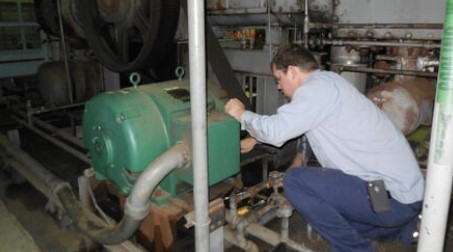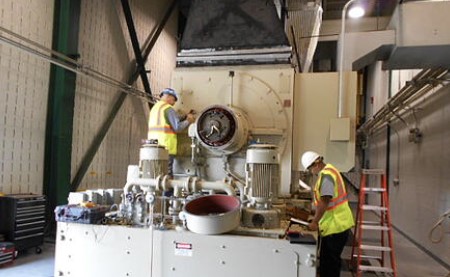Field Service vs. In-Shop Repairs for Your Electric Motors
March 8, 2022
So, you have an electric motor that has a repair issue. You have two choices, to fix it in the field or pull it and send it to an electric motor repair shop.
What decision makes the most sense?
Well, there are a series of factors that you should consider to help guide your decision. Sometimes field service is a great option and other times the unit should be pulled and sent to a shop.
Here are some factors to consider:
1. What’s wrong with the electric motor?
Do you know what’s wrong with the motor?
If not, field service is generally a great place to start. A field service technician or group of technicians can be mobilized to come to your site and evaluate your motor. They can come prepared to do a variety of tests. What these are will depend on if the unit is still running or has failed (or is offline, in general). Sometimes these test will lead to a clear indication of what is wrong and other times it will lead to inconclusive results and a recommendation to remove the motor from service and send to a repair shop. Other times it will lead to providing the fix, right at your site. Every situation is unique and until you have an idea of what is wrong with the unit, you can’t really say if it can be fixed in the field or not.
2. Can repairs be done in the field?
Once you know what is wring with the unit, you have to determine if the repairs can be safely and properly repaired in the field.
There are many factors to consider, such as environment, physical space requirements, lifting, tooling, etc. I remember a time where we needed to repair the sleeve bearings on a 3600RPM motor that was used in a coal fired power plant. We realized pretty quickly that although repairs could be done in the field, to properly perform them and not effect the overall long-term reliability of the motor, the unit should be pulled. In this instance, it was a very nasty environment. Opening up the bearings in that environment would surely introduce contaminates into the bearings and lubrication system. On top of that, its was a 2-pole (3600 RPM) machine that can be finicky at times. Yes, we could actually do the work in the field, but it wasn’t the best choice for the situation. The motor was pulled, the work was performed in our shop and the unit hasn’t had any issues since.

3. Can the unit be pulled?
Sometimes motors (or generators) are too large or complicated to remove from service.
Sometimes removals are extremely expensive or require removing part of a building, such as a roof, to get the unit out. Hydroelectric generators come to mind here. Many times the buildings are built around the units and they are never planned to be pulled. In these situations, even something as complicated as a rewind of the stator (or rotor) may need to be done in the field.
4. Should repairs be done in the field?
Sometimes a repair can be done in the field but you need to ask yourself if it is the best choice for the overall, long-term reliability of the machine. You can clean a unit on-site utilizing dry-ice cleaning technologies but the cleaning is not as effective as a traditional steam and bake that can be done in a repair shop. Does dry ice cleaning clean the unit? Of course, its a great option, but after you’ve dry ice cleaned it multiple times, it may be time for a “deep cleaning” and have it sent to a shop. Think of it like the carpet in your house. You can vacuum over and over but the carpet is a lot cleaner when you finally call in a steam cleaning company to clean it. You’d be amazed by the dark color water that comes out of your “clean carpet”!
Conclusion
There are times when field service is a great option. There are times when a motor should be pulled and sent to a repair shop. At HECO, we perform both, but we simply believe in doing the best option for your unique situation. The last thing we want to see is someone make a good short-term decision that sacrifices the reliability of the electric motor in the future.
Author: Justin T. Hatfield, President of HECO.
Posted in Field Service
